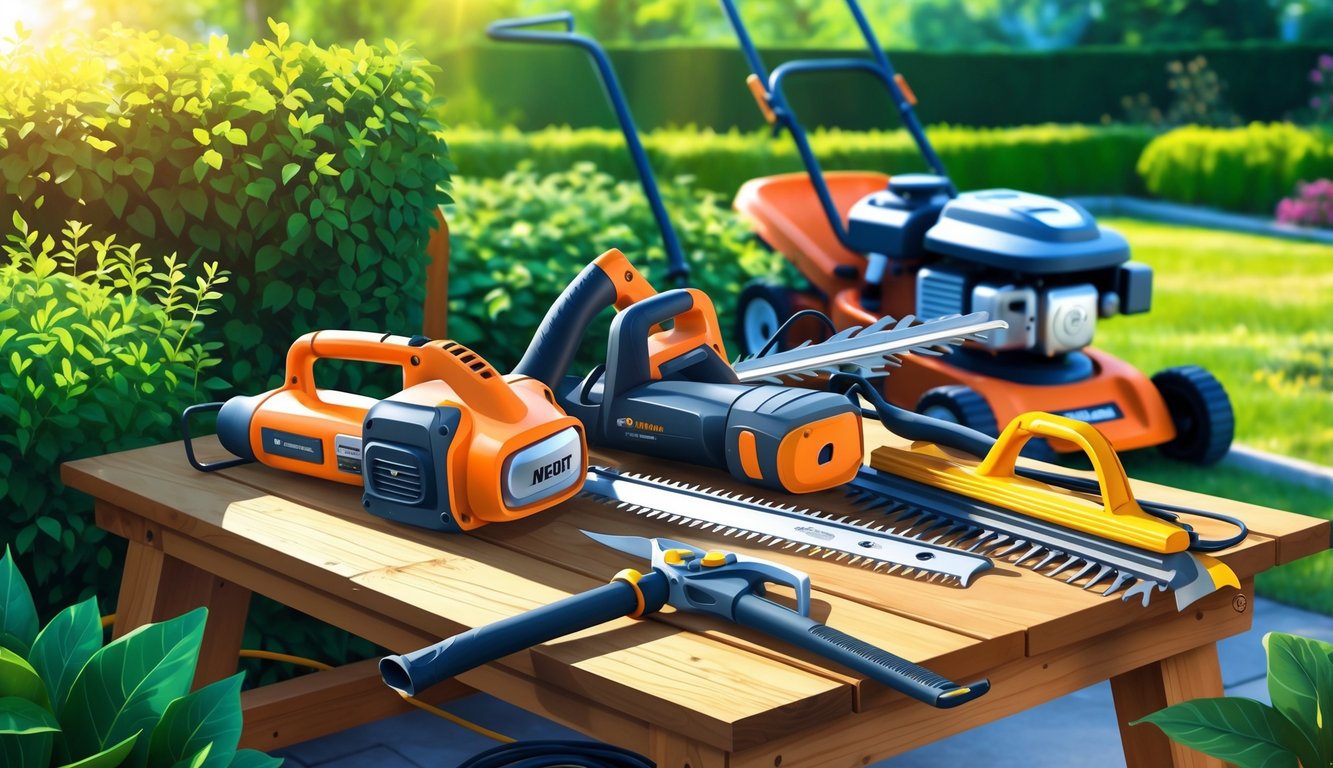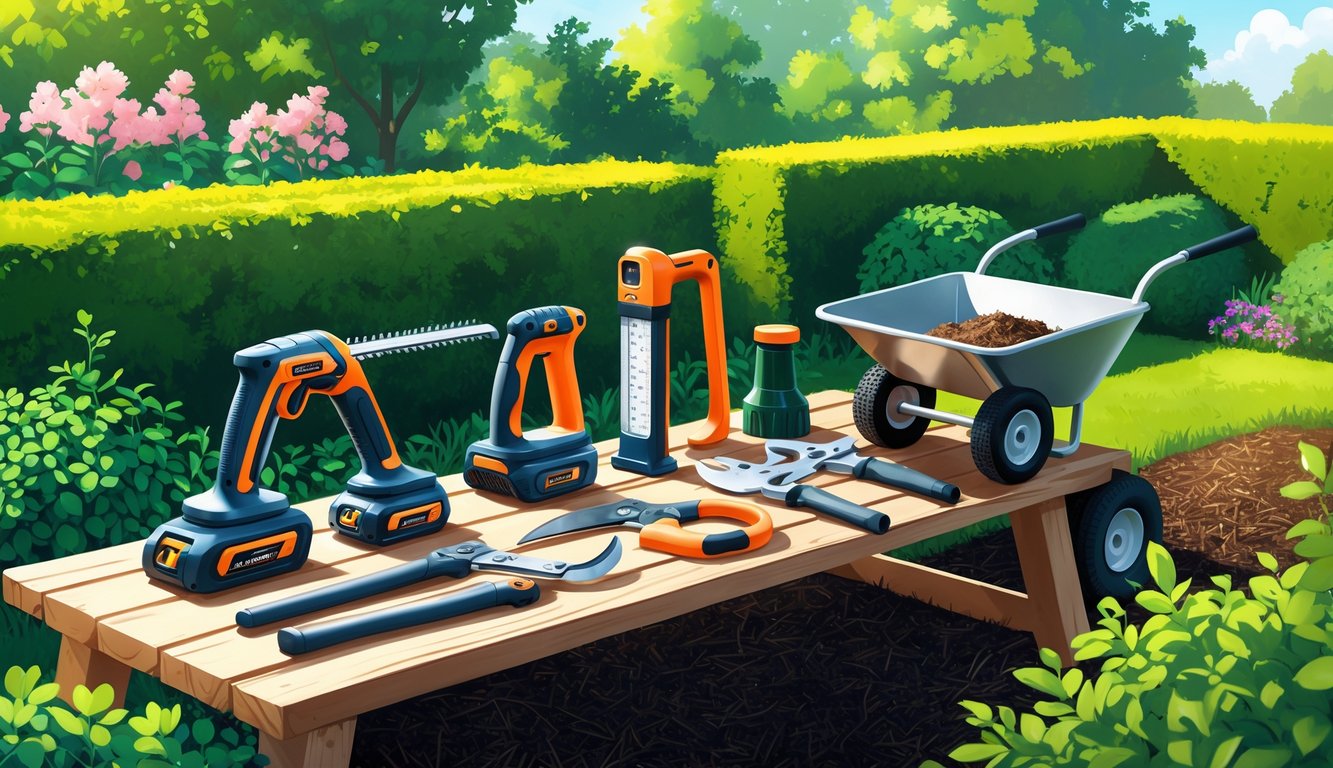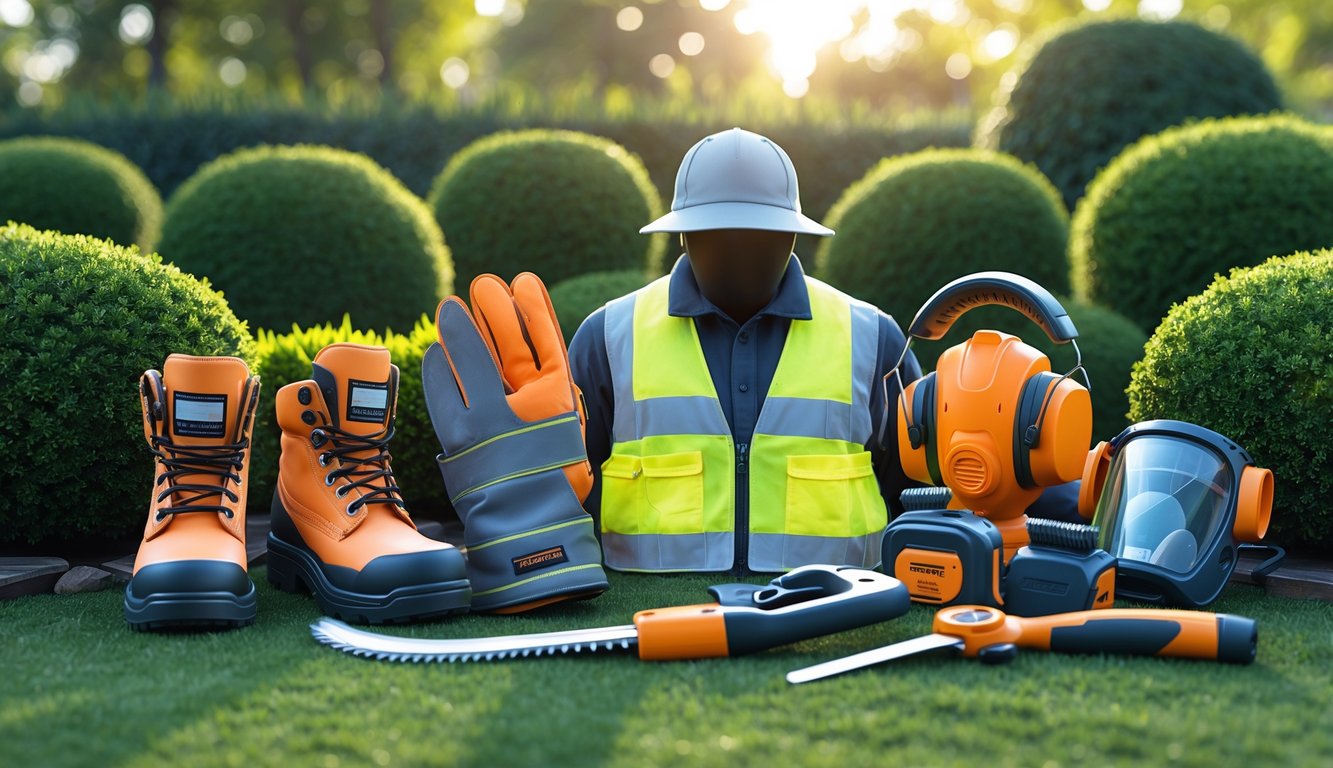
Specialty Tools for Advanced Landscaping Tasks

What really gets me is how nobody talks about how the right tool can save a job. One minute you’re staring at a compacted, patchy lawn or a mountain of brush, and the next you’re done before lunch. You think you know what you need, then you see some new gadget and suddenly your old spreader looks like a relic. Every landscaper’s got their secret weapon, and if they skip these, I can always tell.
Dethatchers, Aerators, and Tillers
Neglected yards turn to thatch and cement faster than you’d think. Powered dethatchers? They rip through dead grass like nothing else. Why don’t more people have one in the truck? No clue.
I once tried using a fork as a lawn aerator. Huge mistake. Plug aerators (core models, not those spike shoes) actually let air and water in. Power aerators, especially with thick tines, make even clay soil less of a nightmare.
Tillers—ugh. I’ve broken handles, overheated rentals, and still ended up with soil so dense even worms give up. Gas-powered tillers, not those weak electric ones, break up beds in minutes. Hand-digging? Don’t bother. My rows are never straight, but at least the job gets done. If you aren’t using dethatchers, aerators, or tillers like pros do, you’re just making more work for yourself.
Spreader and Sprayer Solutions
Hand-tossing fertilizer is a joke. I tried it once, wound up with stripes all over the lawn. Broadcast spreaders (the rotary kind) are the only way to get even coverage. Skip one, and you’ll have spots that look starved next to patches that burn out.
Drop spreaders? Great for edges, so you’re not dumping product in the flower beds or on the sidewalk. I switched to a pro-grade push model after seeing a friend’s spreadsheet—paid for itself in wasted product by month two.
Sprayers—tiny hand ones are pointless for real yards. Backpack sprayers, the four-gallon diaphragm kind, keep weed killer where it belongs and make algae treatments on patios less of a chore. Saving fifteen minutes for every thousand square feet? Not even exaggerating. Since I’d rather not kill someone’s veggies with herbicide drift, I like patterns I can control. Commercial spreaders and sprayers aren’t just about big jobs—they’re about not fixing your own mistakes.
Wood Chippers and Commercial Equipment
I still remember hand-sawing branches for hours, sweating buckets, when a wood chipper could’ve turned that mess into mulch in minutes. Even a small gas chipper chews up thumb-thick sticks and almost makes it fun. Almost.
Big commercial gear—ride-on aerators, self-propelled dethatchers—they’re expensive, but if you’re working acres or slopes, you either use them or you’re doomed. Met a guy who claims he likes hand-mulching and trimming hedges for miles. He’s either lying or has a secret stash of commercial-grade machines somewhere.
Last week, my neighbor wanted to burn a brush pile. Illegal here, but my chipper doesn’t care—it just works. The less you fight the big jobs, the more energy you’ve got to fix the small stuff you forgot.
Safety Gear and Personal Protection

How many times have I heard “I’ll be quick” right before someone gets a thorn in the hand or a headache from a trimmer? PPE isn’t just a checkbox—if you want to keep your fingers and hearing, you pay as much attention to gear as you do to your mower. Gloves that don’t fall apart after a week, earplugs that actually block noise, the basics.
Work Gloves for Comfort and Protection
Nothing wrecks your day faster than torn-up hands or chemicals eating your skin. I’ve lost count of shirts and fingertips to rose roots and whatever else. Good gloves—lightweight but tough—are a must. Not the stiff plastic ones. Reinforced palms, puncture resistance, and if you deal with thorns or wire, reinforced index fingers. I promise, split index fingers are the worst. Reinforced gloves for landscapers sound like overkill until you need them.
Then there’s always that guy who thinks cotton gloves are fine—until he’s covered in herbicide and scratching for days. Nitrile or leather for chemicals and rocks, mesh backs for sweaty hands. Miss that and you’re working with swamp fingers all summer. Allen Tuck at Richmond TAFE says hand injuries are as common as sunburn for landscapers. Nobody budgets for bandages, but maybe they should.
Hearing Protection and Safety Glasses
Machines are loud. Hedge trimmers, mowers, blowers—your ears ring for hours. Anyone who claims they “get used to it” is probably halfway deaf already. Ear muffs with a high NRR (25 dB or more) are best—lets you hear what matters and blocks the rest.
Safety glasses? Not ski goggles, just shatterproof wraparounds. Rental gear is always scratched to hell, so I keep my own in the glove box. Polycarbonate lenses work for chips and dust, but scratch them and they fog up, which is a nightmare in the woods. Landscaping safety gear isn’t flashy, but one bug in the eye and you’ll never forget them again.
Keeping Safe with Goggles and More
So, picture this: I’m crawling through some overgrown nightmare of a yard, duck under a branch, twig goes straight for my eye—except, thank god, goggles. Not my retina. Real safety goggles, the vented ones that actually block chemicals and flying junk, yeah, they’re weird at first. People always whine about them fogging up, but that’s just the bargain-bin kind. You know, the ones that look like you found them at the bottom of a lost-and-found at the YMCA pool.
Mesh face shields? Nobody talks about them, but they’re kinda brilliant. I only bother for chainsaws or when I’m hacking at brush, but the difference is wild—no sawdust in your teeth, no bugs in your ear. All this PPE for landscapers is so underrated. Try crawling through lantana with just sunglasses, see how much ends up in your shoes and—somehow—inside your pants. And don’t get me started on snake gaiters. After nearly stepping on a red-belly last spring, I’m not skipping them again. Still, no gear blocks sunburn or keeps ticks off, so, whatever—goggles and shields are just the bare minimum if you don’t want to tempt fate.